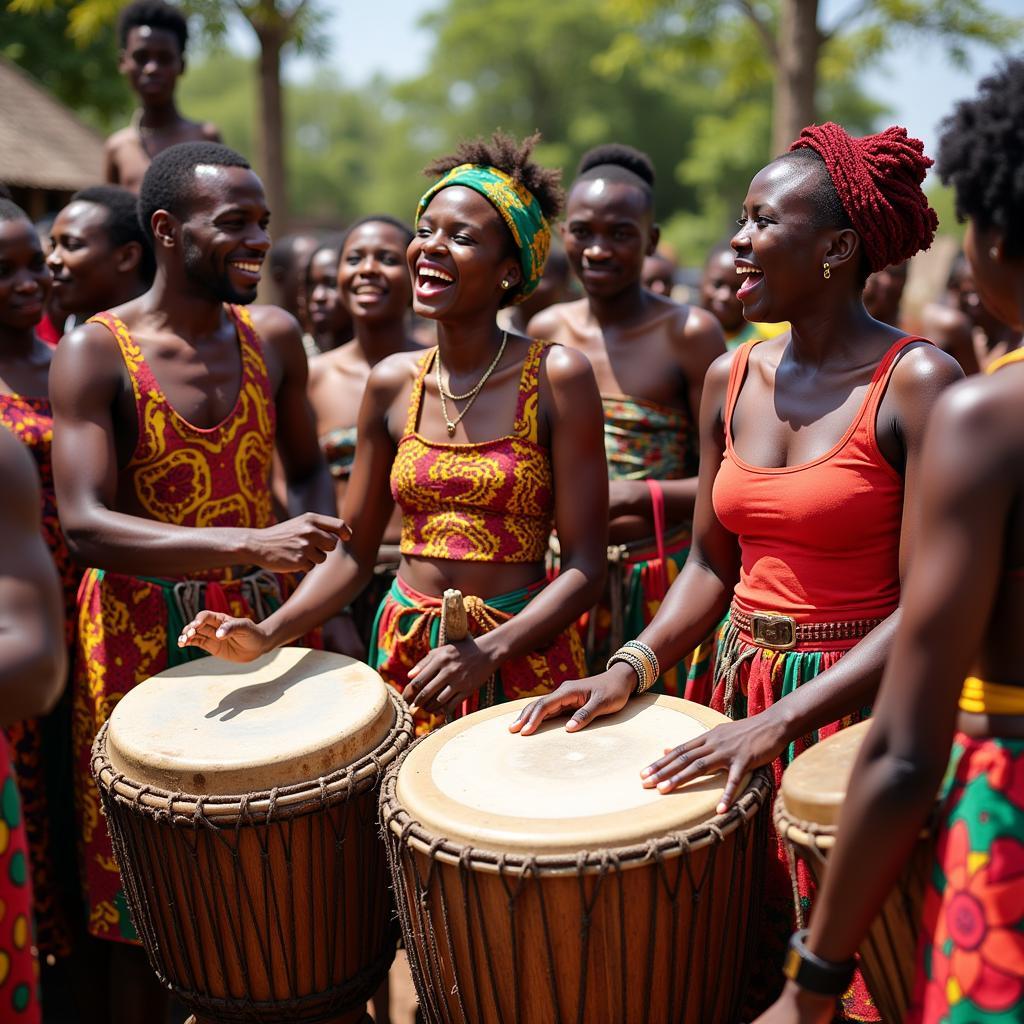A Comprehensive Guide to African Antelope Types
African Antelope Types represent a stunning diversity of hoofed mammals, gracing the savannas, woodlands, and deserts of the continent. From the majestic eland to the diminutive dik-dik, these graceful creatures play a crucial role in the African ecosystem. This article will delve into the fascinating world of African antelope, exploring their various types, characteristics, and unique adaptations.
The African continent boasts an incredible array of antelope species, each adapted to its specific environment. Understanding the distinctions between these diverse antelope types offers a deeper appreciation for the rich tapestry of African wildlife. Let’s embark on a journey to discover the remarkable world of these iconic animals. After reading this guide you’ll be able to differentiate a kudu from a klipspringer with ease!
Majestic Giants: The Largest African Antelope Types
Among the numerous African antelope types, several stand out for their impressive size. The eland, the largest of all antelope, can weigh over a ton and reach heights of up to six feet at the shoulder. Their spiral horns and powerful build make them truly magnificent creatures. Similarly, the greater kudu, with its long, spiraled horns and striking vertical stripes, commands attention. These large antelope play a vital role in shaping their ecosystems, influencing vegetation patterns and serving as prey for apex predators.
What distinguishes a kudu from other large antelope? Their impressive horns, often exceeding four feet in length, are a key identifier. These majestic spirals are a symbol of strength and are often prized by hunters.
Graceful Gazelles: Masters of Speed and Agility
African gazelle types are renowned for their elegance and speed. These slender antelope are built for life on the open plains, where their agility allows them to outrun predators. Species like Thomson’s gazelle, Grant’s gazelle, and the springbok are iconic figures of the African savanna, their graceful leaps and bounds a testament to their adaptability. They thrive in herds, using their keen eyesight and speed to evade danger.
Want to learn more about the different types of gazelles? Check out our guide on african gazelle types.
Small but Mighty: The Miniature Antelope of Africa
While some antelope are giants, others are remarkably small. The dik-dik, standing at just over a foot tall, is one of the smallest antelope species. These tiny creatures are perfectly adapted to navigate dense thickets, their small size allowing them to move effortlessly through the undergrowth. Despite their diminutive stature, they possess a surprising resilience and play an essential role in their respective ecosystems.
Adapting to Diverse Habitats: The Secret to Antelope Success
African antelope types demonstrate remarkable adaptability, thriving in a wide range of habitats. From the arid deserts to lush woodlands, different antelope species have evolved unique strategies for survival. The oryx, for instance, can tolerate extreme heat and go without water for extended periods, while the klipspringer, with its specialized hooves, is perfectly adapted to navigating rocky terrain. This diversity of adaptations showcases the remarkable resilience of these incredible animals.
What makes the klipspringer such an adept climber? Their hooves are specially adapted for gripping rocky surfaces, allowing them to scale steep cliffs with ease. This unique adaptation allows them to access food and escape predators in otherwise inaccessible terrain. For a deeper understanding of African deer, visit african deer types.
Threats and Conservation Efforts: Protecting Africa’s Antelope
Despite their adaptability, many African antelope types face significant threats. Habitat loss due to human encroachment, poaching, and climate change are all putting pressure on these vulnerable populations. Conservation efforts are crucial to ensure the survival of these iconic animals. Protected areas, anti-poaching initiatives, and community-based conservation programs are vital to safeguarding the future of African antelope.
Interested in the predators these antelope face? Check out information on african canids.
Conclusion: A Celebration of African Antelope Diversity
African antelope types represent a remarkable example of biodiversity. From the towering eland to the diminutive dik-dik, these animals play a vital role in the African ecosystem. Understanding their diversity, adaptations, and the threats they face is crucial for their conservation. Let us continue to admire and protect these magnificent creatures for generations to come. Learn more about African culture and its connection to wildlife with african guru. For those interested in hunting, understanding the tools used is important; explore more about african big game hunting rifles.
FAQ
-
What is the largest antelope in Africa? The eland is the largest antelope in Africa.
-
What is the smallest antelope in Africa? The dik-dik is one of the smallest antelope species in Africa.
-
What are the main threats to African antelope? Habitat loss, poaching, and climate change are the main threats to African antelope.
-
How are antelope adapted to their environment? Different antelope species have evolved unique adaptations, such as specialized hooves for rocky terrain or the ability to tolerate extreme heat and drought.
-
What are some examples of African gazelle types? Thomson’s gazelle, Grant’s gazelle, and the springbok are examples of African gazelle types.
-
Why are antelope important to the African ecosystem? Antelope play a crucial role in the food chain, serving as prey for predators and influencing vegetation patterns.
-
What conservation efforts are being made to protect African antelope? Protected areas, anti-poaching initiatives, and community-based conservation programs are being implemented to protect African antelope.
More Questions to Explore
- How do antelope social structures vary across different species?
- What is the role of antelope in African mythology and folklore?
- How does climate change specifically impact different antelope populations?
- What are the most effective strategies for combating antelope poaching?
Need assistance? Contact us: Phone: +255768904061, Email: kaka.mag@gmail.com or visit us at Mbarali DC Mawindi, Kangaga, Tanzania. We have a 24/7 customer service team.
